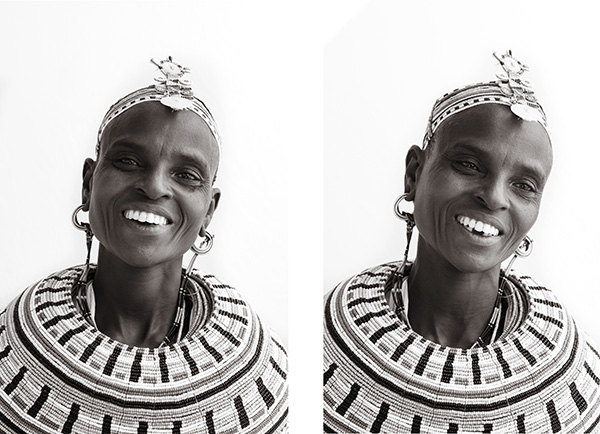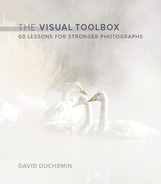Lesson 39. People
Photographing people is a subject that can take, and has taken, whole books. If there were three things, and only three things, I could teach about photographing people, it would be these. First, making photographs of people is not primarily a technical pursuit, but a relational one. Second, photographing people is no different than photographing everything else—a photograph of an interesting person is not the same as an interesting photograph. Third, almost everyone I know is nervous, or downright frightened, by the prospect of photographing people, and the ones who aren’t are a little weird and probably to be avoided.
Let’s go back to the first idea. The best portraiture is not done by people who are profoundly technically proficient. In fact, the geeks who know their camera specs inside and out are probably the ones that’ll make really, really sharp and perfectly exposed photographs of cats. To them I can only say, it might be time to turn off the Star Trek reruns, take William Shatner’s advice and get a life, and in that life include some social interaction. Come back to this lesson when you’ve done that. The others among you just need to make the relationship the first priority. Why? Because it’s within the context of the relationship, however brief, that you will truly see the subject, and you can’t photograph what you don’t see. Great portraiture is about revelation, and you can’t portray that until something about the subject has been revealed to you. That happens when the subject is relaxed, when they trust you, and when you are genuinely interested in and curious about them. It’s about trust, even on the most basic level. If they trust you, they will open up to you, follow your lead, and in some way reveal themselves to you.

Nikon D3s, 85mm, 1/1000 @ f/5.6, ISO 400
The difference between these photographs and the ones that didn’t make the cut was time, curiosity, patience, and kindness. All the gear and technique in the world is nothing without those.
The second idea adds to the first. You want your subjects to trust you because when they relax they act more like themselves, which leads to a genuine laugh, an authentic gaze, or the removal of the masks most of us wear in some form. A truly interesting-looking man is no guarantee of an interesting or engaging photograph. What interests us is the gesture, the lines, the representation of connection, and that won’t be there in the photograph if they’re not there with you. I’m talking specifically about portraits here, but the same logic applies to candid photography. We respond most to photographs of people where there is some recognizable (what we can recognize, we can feel) emotion. Even boredom, if shown strongly, can work, but make it something. If photographing a couple in a fight, choose your moment so the fight can be felt. A couple in love? Show that love by some gesture. It doesn’t have to be passion. It can be tenderness. But the gesture has to be there, and it has to be obvious to those of us who weren’t there at the time. If, in order to truly feel this moment, we need to have seen the moments on either side of the one you photographed, it’s not going to work.
“Great portraiture is about revelation, and you can’t portray that until something about the subject has been revealed to you.”
The third idea is the one most photographers find hardest, and it sends them in droves to photographing landscapes. Working with people can be scary. We are no longer completely in control. If they are strangers, they could say no to our request to photograph them. Despite our best efforts we might never click with them, and the moment when they reveal something of themselves to us might never come. So I’ll tell you what I tell any of my students who ask me about this, hoping I have the secret: there is no secret. Courage is not the absence of fear; it’s the act of the will to act in the presence of fear. So, to be blunt, either work up the courage to do it, or don’t. For most of us our fear is strongest where we have the most to lose, so hold it lightly. So what if a stranger says no? So what if the photograph isn’t amazing? If you can relax about it and lean into the relationship, it can be much easier. Get to know them. Laugh with them. Ask them about their children. Make the photograph the record of that time together, not the only experience of it.
The rest is easy. Anyone can move a subject or a light to create a catchlight in the eye. And everything else is in this book already. Pay attention to your background. Be attentive. Choose your lens and the orientation of your frame based on the story you want to tell and the feelings you want to evoke based on the situation, not because one lens or framing is considered more appropriate. There’s no place for what is proper or appropriate in art. Lastly, consider again the advice of Robert Capa: if your photographs aren’t good enough, you aren’t close enough. Get closer. Spend more time. Find a level of intimacy that creates trust. Spend even more time. And at a certain point the camera (you think you’re scared of your subject—some of them are terrified of that camera) stops being so present, stops being a barrier, and then (and only then) will your photographs become something more universal and compelling. No posing guide or clever “Secret to Better Portraits” article online is going to get you there. This has much more to do with your heart than it does with your eye. Connect with the heart first, and let the eye take over later.
